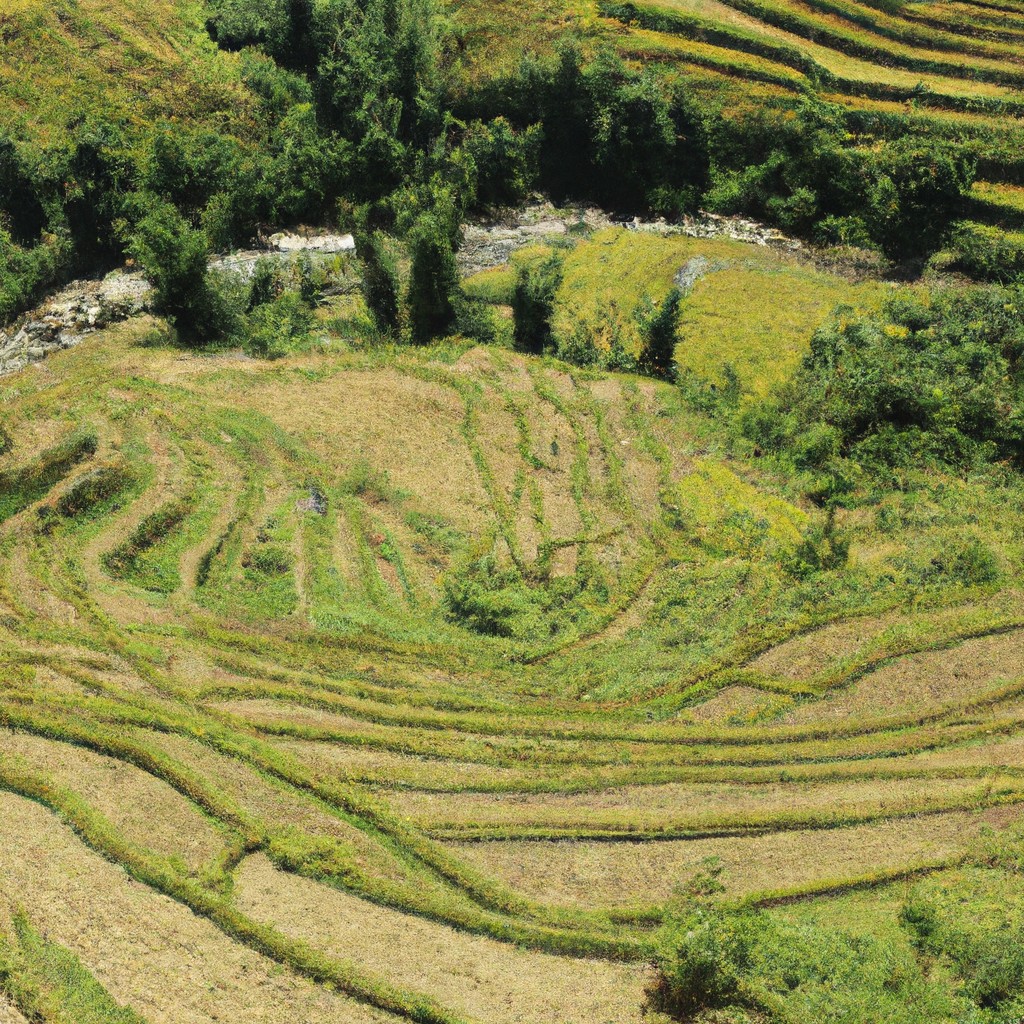Terracing is used in Southeast Asian agriculture to reduce soil erosion, improve water retention, and maximize arable land on steep terrains, making even mountainsides look like nature’s own staircase to heaven.
Look Inside:
Historical Significance

Many moons ago, Southeast Asian farmers needed a plan to tackle their mountainous landscapes. Enter terracing—those neat, stair-like formations you see etched into hillsides.
First up, it dates way back. Think ancient civilizations like the Ifugao in the Philippines, who designed rice terraces that still impress architects today. They were like the original Earth sculptors.
Farmers discovered that terracing wasn’t just a nifty way to prevent their soil from taking an unplanned trip downhill. It also allowed them to cultivate more land in otherwise unusable hilly terrain.
Plus, terracing wasn’t solely about farming. It became a cultural thing, often involving whole communities working together. Sort of like the ancient version of a block party, but with more shovels and fewer BBQ grills.
Soil Erosion Control
Soil erosion can be a real party pooper for farmers. The hilly terrain of Southeast Asia is just asking for trouble when it rains. Terracing steps in like a superhero, transforming steep slopes into a series of flat, stable platforms.
These terraces slow down water runoff, giving soil some time to chill out and absorb the precious H2O. It’s like turning a chaotic water slide into a calm, lazy river. Bye-bye, mudslides.
Terraces also act like a barrier, capturing loose soil that would otherwise be jetting downhill to start a new life as silt in rivers. Farmers get to hang on to that nutrient-rich topsoil, and rivers get to stay unclogged. Win-win.
Water Management
Terracing allows farmers to cleverly manage water, especially during the unpredictable monsoon seasons. Think of it like setting up a miniature series of bathtubs on a hillside. When rain falls, instead of rushing down in a muddy fury, water is caught and gently spread out across each level.
This nifty technique reduces runoff, minimizes the risk of floods, and ensures crops get just the right amount of water – not too little, not too much. It’s the Goldilocks approach to hydration! By trapping water, terraces also help recharge groundwater levels, which is a fancy way of saying they act like giant nature-made water bottles.
Plus, terracing ensures that nutrients don’t wash away, keeping the soil rich and productive. And if anyone’s ever tried hydrating a fussy houseplant, they know just how important that is.
Increased Agricultural Productivity
Terracing transforms uncooperative hills into layers of friendly, flat farmland. Think of it as giving the earth a much-needed pedicure! This method allows for more horizontal real estate, letting farmers plant a greater variety of crops while giving them plenty of room to stretch out roots and live their best plant lives.
By reducing the steepness of slopes, terracing also improves soil retention. Plants love good, nutrient-rich soil, and terracing helps keep it right where it’s needed instead of letting it slide away during the first heavy rain.
Moreover, the structure of terraces makes it easier to practice crop rotation, which is the agricultural equivalent of a wardrobe change every season. This helps maintain soil fertility and keeps pests from throwing a never-ending party in the fields. The result? Happier, healthier plants and higher yields that feed more people. Talk about a win-win!
Community Involvement and Labor Sharing
In Southeast Asia, terracing isn’t just an agricultural practice; it’s a community affair, almost like a group project, but with fewer awkward Zoom meetings. Farmers come together in a spirit of cooperation, sharing labor, resources, and the occasional good-natured gossip.
Picture this: villagers working side by side, each wielding tools with precision, creating intricate terrace steps. It’s teamwork at its finest, harnessing collective effort for a greater good.
This collaborative approach does wonders for efficiency. Instead of one person toiling alone, many hands make light work. Tasks get done faster, and hey, you might even get a workout without the gym membership.
Plus, it’s a time for skill-sharing. Got a neighbor who’s a whiz with water channels? Learn from them. Terracing becomes an open-air classroom, where knowledge flows as freely as the water channels you’re building.
Lastly, this group effort fosters a sense of belonging. It’s agriculture with a side of bonding, making the harvest not just a product of the land, but of shared dedication and teamwork.




